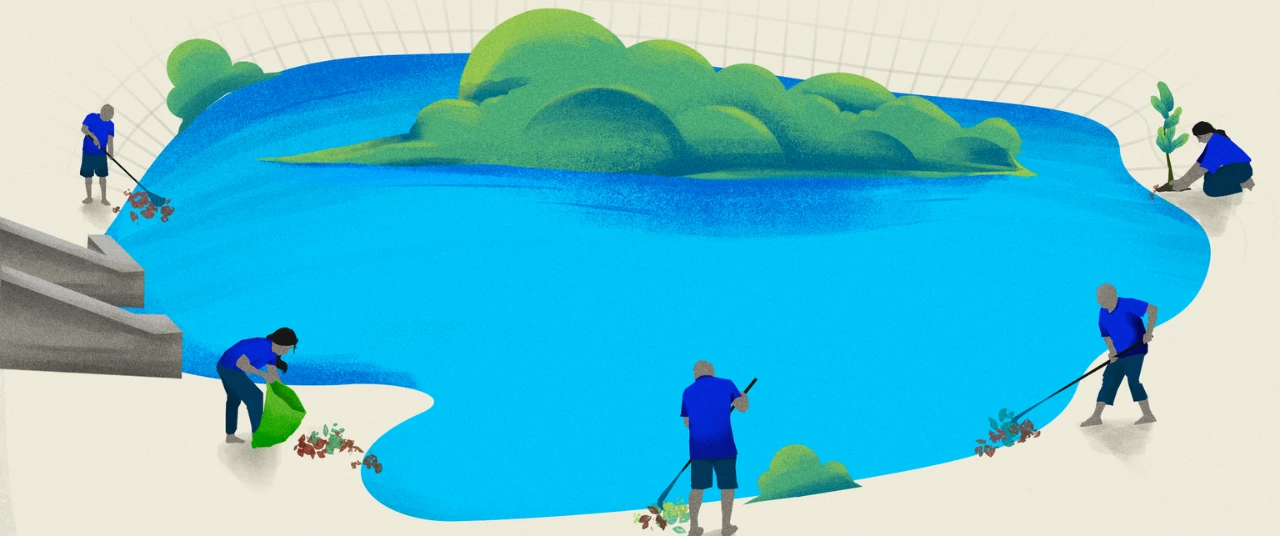Chennai-based Seerakku is turning farmland into carbon sinks by planting trees that supplement farmer incomes






Before his stint at the Indian Institute of Technology (IIT-Madras), before fatherhood, and before agroforestry became his everyday pursuit, Dinesh SP—like many of us—was clueless about carbon emissions at an individual level, and the long shadow they cast. Once he became aware about their impact on the environment, however, life would never be the same. First, he calculated his own emissions using the United Nations carbon footprint calculator.
Alarmed by the number before his eyes, Dinesh committed to making the switch to eco-friendly ways and means. Better yet, he decided to offset his emissions voluntarily and those of his soon-to-be-born daughter, Aadavi. The approach he picked? Planting trees.
The first step
In 2022, Dinesh resigned from his position at IIT-M and, after thoughtful discussions with his wife, Janaganandhini, they decided to plant trees on farmland. They chose Janaganandhini’s native village, Sivalingapuram—a rain-fed area near Krishnagiri in Tamil Nadu—as their starting point. Aware of the mistrust among small landholding farmers due to previous experiences with fraudulent schemes, they began by persuading 15 of Nandhini’s relatives to participate in the first plantation drive. Dinesh sourced saplings from local nurseries, selecting native, low-maintenance, and commercially viable species to help landowners generate supplementary income.
In September 2022, six months before the birth of his daughter Aadavi, Dinesh began planting trees. By March 2023, when she was born, he had planted 6,000 trees—including teak, chikoo, mango, lime, sandalwood, coconut, areca nut, and guava—at a density of 300-800 trees per acre. Following consultations with tree-planting experts and organisations, he selected saplings suited to the local ecology, and proximate to water sources. They were planted at 10-foot intervals between crops to avoid disrupting the existing agricultural cycle.
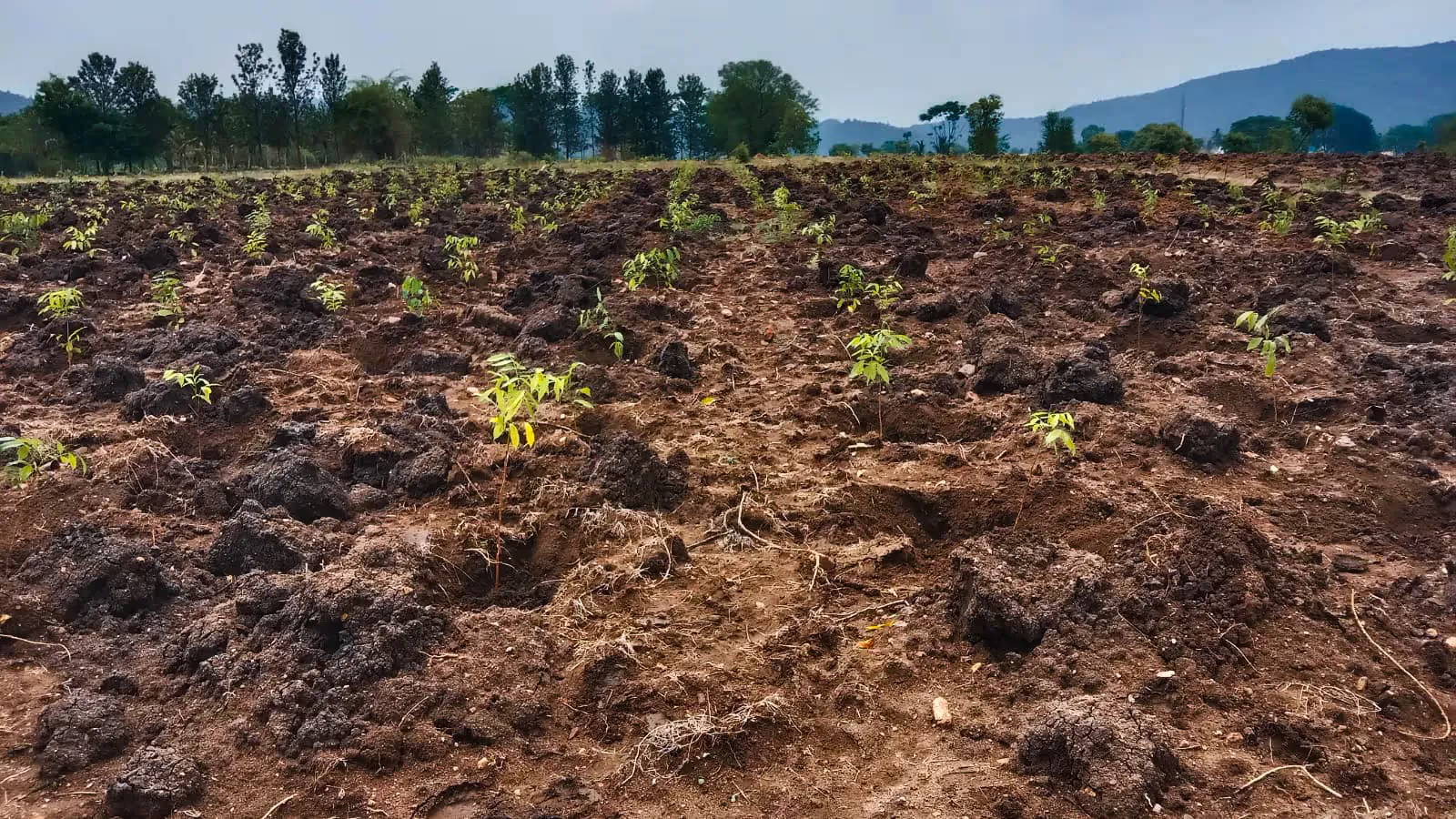
On average, an individual’s annual carbon emissions amount to approximately 3 to 4 tonnes. This figure is calculated by accounting for electricity consumption, dietary habits, and transportation-related emissions. During the initial two years, each tree absorbs only 5 kilograms of carbon, amounting to a total of 30 tonnes over that period. As the trees mature, their carbon absorption capacity increases significantly. These calculations are validated by the UN calculator and are consistent with other recognised international standards.
Beyond Sustainability, a carbon emission audit firm in Coimbatore, reviewed the tree-planting records and confirmed that Aadavi’s lifetime emissions had already been offset. To acknowledge Dinesh’s achievement, the United Nations Sustainable Development Council conducted a survey and validated the records for the Asia Book of Records, which recognised Aadavi as the world’s first carbon-neutral baby in 2024.
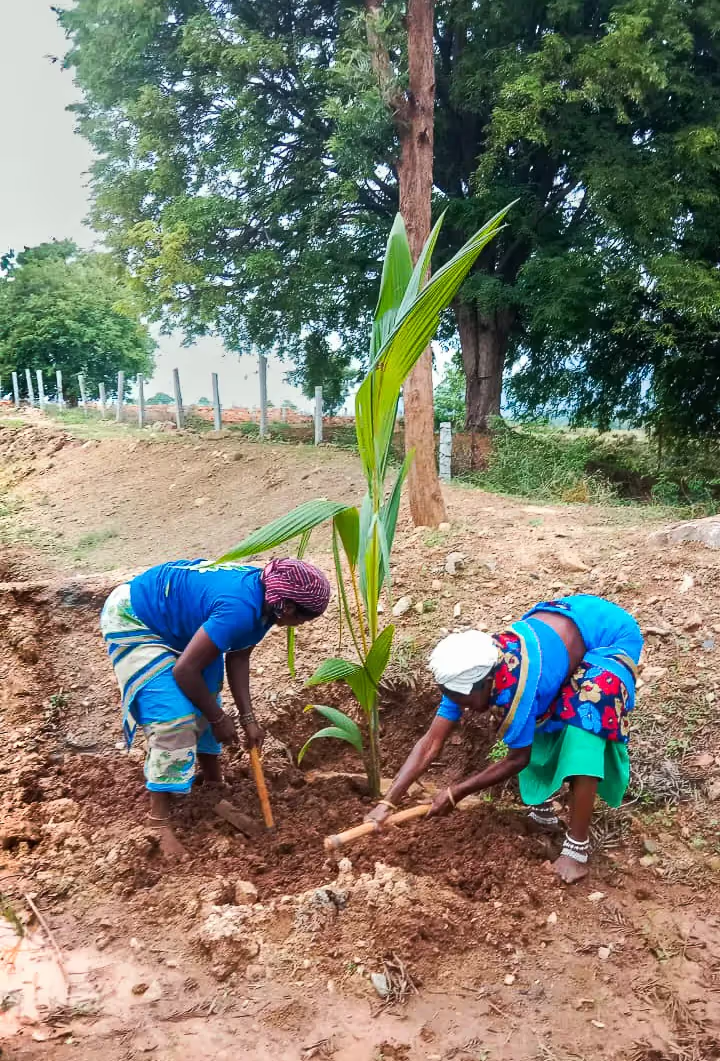
Looking to scale the model, Dinesh initially partnered with hospitals in Chennai, planting a tree for every newborn. Media coverage led to individuals approaching him to offset their children’s emissions, while some organisations sought similar efforts as part of their ESG commitments.
In response, Dinesh and Janaganandhini founded Seerakku in 2022—a Chennai-based NGO dedicated to carbon-neutral initiatives through agroforestry. Rather than purchasing seeds, Seerakku sourced them from farmers across Tamil Nadu, raised saplings, and transplanted them at designated sites.
Also read: The tree that keeps the Thar alive
How Seerakku works
Seerakku’s interest lies with small landholding farmers, who owned even up to 10 acres of land but worked for other, bigger landowners, and invested their earnings in farming—especially in areas like Krishnagiri, where farming is carried out for only six months a year. Their extent of cultivation depended on the financial resources they had. They left the rest of the land barren. In fact, out of the 4 lakh trees Dinesh and his team have planted so far, working with more than 500 farmers, 3 lakh are in Krishnagiri and 1 lakh of them are spread in Tiruvallur, Chengelpet, Kanchipuram in Tamil Nadu, and Chithoor in Andhra Pradesh.
Seerakku approached the farmers, and after getting their consent, the team planted the saplings on their lands. In the first two years, Seerakku’s local team visited the plantation sites, checked on the plants, and offered guidance on maintenance. Farm equipment such as tillers, brush-cutters, weeding machines, and natural fertilisers were given to farmers free of cost or on daily or hourly rentals.
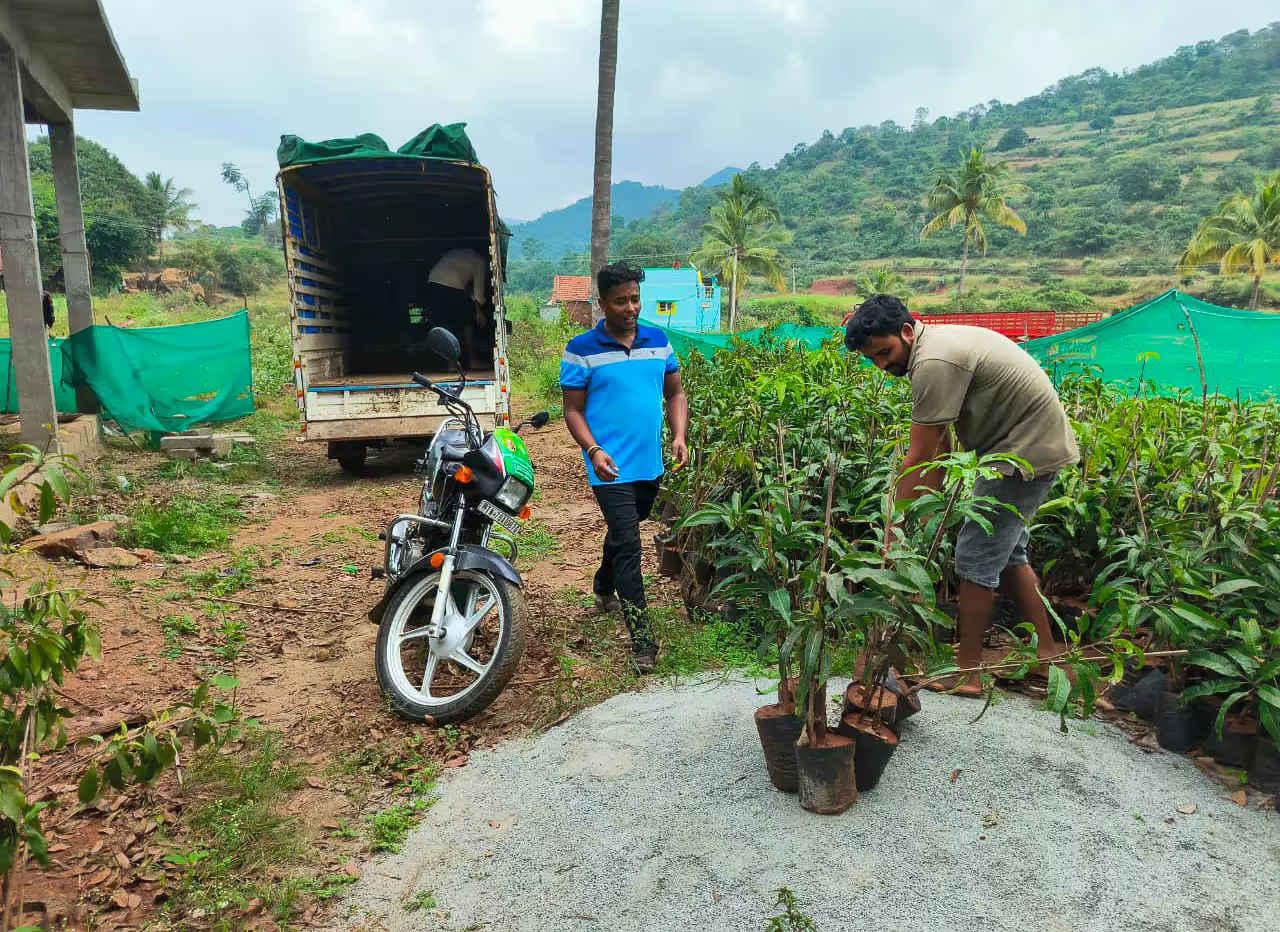
Team Seerakku has planted about 2,500 areca nut, coconut, rose apple and lemon trees on the three acres owned by Panchali, a 45-year-old farmer in Sivalingapuram. After her husband’s passing, Panchali and her two children have been living off the income from farming. “Like others around here, I was confined to cultivating ragi and paddy, along with pigeon peas and fava beans for rotational purposes. All these years, we were struggling to recover our initial investment. Now, the lemon trees planted by Seerakku are getting ready for harvest. We expect at least ₹2 lakh in a year as additional income from them,” Panchali says.
Also read: A man dreamt of a forest. It became a model for the world
Cashing in
Income from Seerakku’s agroforestry initiative can range from ₹1 lakh to ₹3 lakhs, depending on the tree species and harvest cycles—for instance, lemon trees bear fruit year-round, while mangoes are seasonal.
In Sivalingapuram, the NGO has planted a total of 2,000 areca nut, lime, and guava trees on farmer Sakthivel’s 6-acre plot. “I’ve already begun harvesting guavas, yielding around 40 kilos a month, which I sell locally for ₹8,000 to ₹10,000. This will increase once the lime trees begin fruiting,” he says.
“Agroforestry benefits farmers without disrupting their primary crops. The additional income strengthens livelihoods and discourages the conversion of farmland into residential or commercial plots. With the right intellectual and financial support, farmers can adopt it successfully,” notes Dinesh.
{{quiz}}
Long and short-term challenges
Some of the farmers the organisation encounters are dedicated agriculturists who have fought the odds to persist. This, in turn, can shape their perspective towards agroforestry missions. “It is very difficult to get farmers’ consent and cooperation to get work done on the trees,” Dinesh says.
When it comes to executing Seerakku’s objectives, pest attacks that turn the trees’ leaves yellow and delay fruiting are widespread. Dinesh explains this as one of the predominant challenges the team faces and deals with. Bio-remedies, from neem sprays and meen amilam or fish amino acid (for growth regulation) to neem oil cakes as natural compost for plants, are recommended to control attacks. For those low-income farmers who cannot spend, the team pitches in and takes care of pest prevention.
However, the impact of climate change has taken more severe forms. The team observed that the soil had lost its biodiversity and fertility in several areas, and water sources were inaccessible. In response, they began creating farm ponds across 10-20 cents of land in affected villages. Additionally, disused water bodies—often turned into garbage pits—are now being cleared to allow rainwater to percolate and help recharge depleted water tables. Drip irrigation systems have also been installed across farmland.
Explore other topics
References

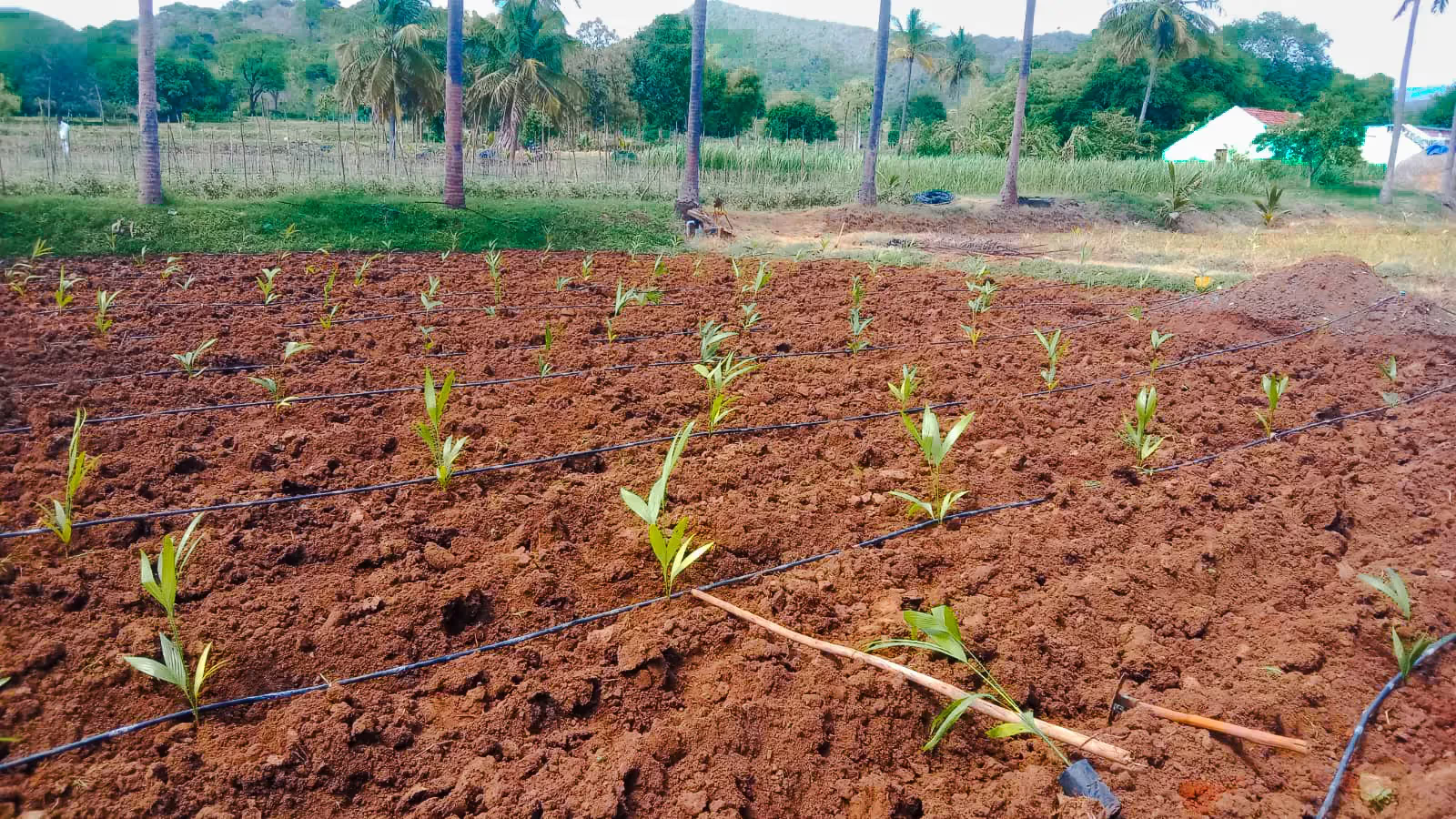
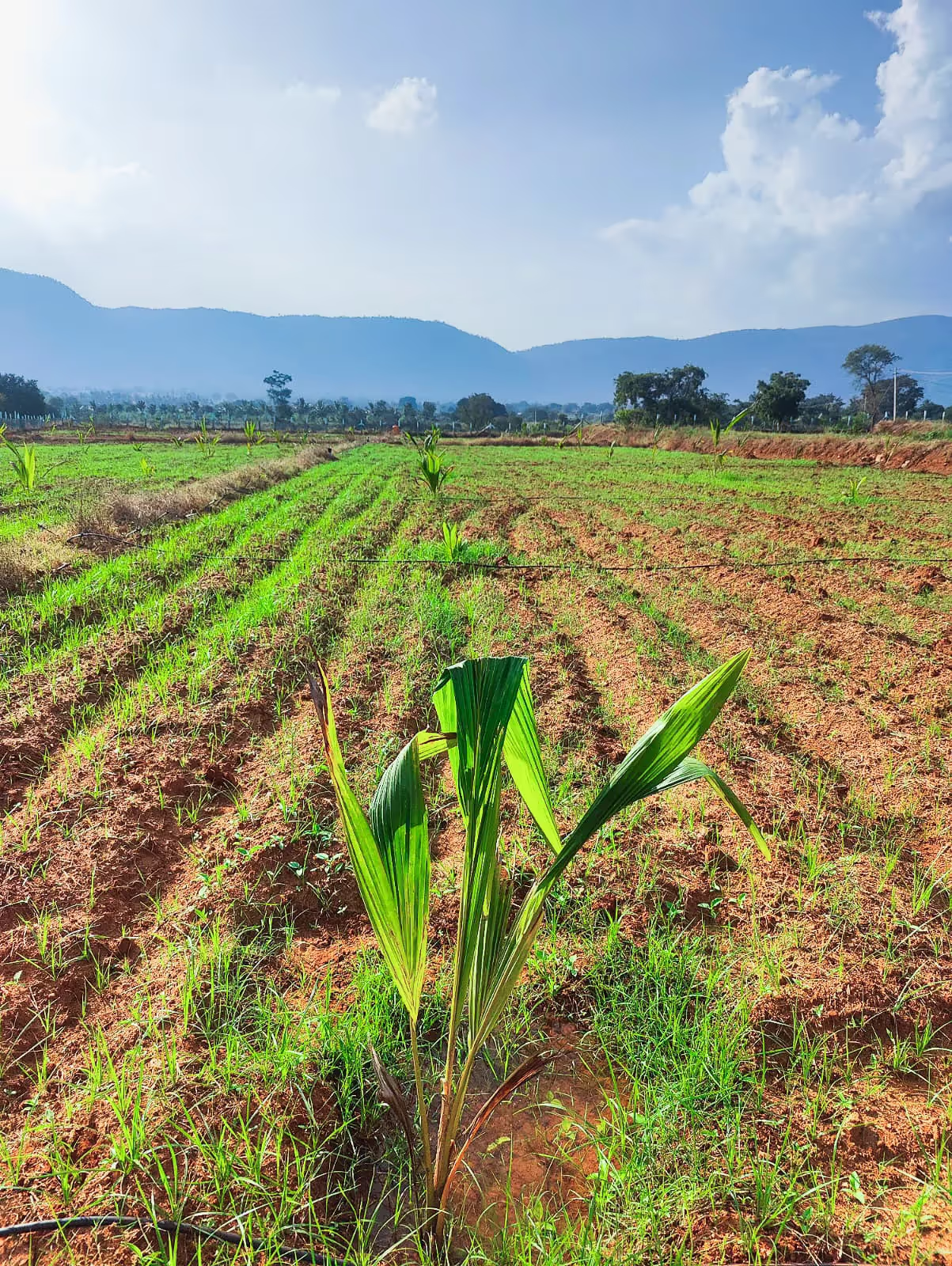

.avif)

.png)
.jpg)
